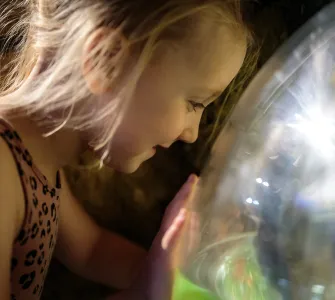My name is Lloyd, and as a Senior Aquarist at The Deep, I have had the pleasure of working with many fascinating animals.
On a day to day basis I look after the penguins and also take part in the daily dives in our main display. As amazing as some of these creatures are few are as captivating to look at as the poison arrow frogs. These brightly coloured amphibians are native to Central and South America and are known for their toxic skin secretions.
Poison arrow frogs are small in size, with most species measuring less than 2.5 cm. However, their vibrant colours and patterns make them stand out in their natural habitats. Some species, like the blue poison arrow frog, are known for their striking blue coloration. The two poison arrow frog species we have here at The Deep include the Blue and Black poison arrow frogs and the Green and Black poison arrow frogs. Both these species have distinct black markings on their body as well their bright base colour. The distinct black markings they have are unique to each individual (similar to a fingerprint) and actually allow us to individually track and record each individual we have on display.
One of the most unique features of these frogs is their toxic skin secretions. These secretions contain a variety of chemicals that can be deadly to predators. However, in captivity, poison arrow frogs are not toxic, as their diet does not contain the insects that produce these toxins. Poison arrow frogs are also referred to as poison dart frogs because tribes in the rainforest sometimes use these secreted toxins to coat the tips of their arrows or blow darts.
In addition, dart frogs are not the only frog species we house here at The Deep. We also have a display of Amazon Milk frogs and Green Mantella Frogs. In the wild the Green Mantella are found on the island of Madagascar and, similar to a number of mantella species, these frogs are smaller in size reaching a maximum size of around 2cm. These are also found in rainforests but they usually prefer a slightly cooler climate than most Central and South American frog species.
Unfortunately a number of species of frogs are threatened with extinction due to habitat loss, pollution, and the illegal pet trade. Zoos and conservation organizations play a vital role in the preservation of these animals, both through breeding programs and habitat conservation efforts. Additionally World Frog Day hopes to celebrate these amazing creatures through a day dedicated to raise their awareness and help provide a safer environment to survive.



